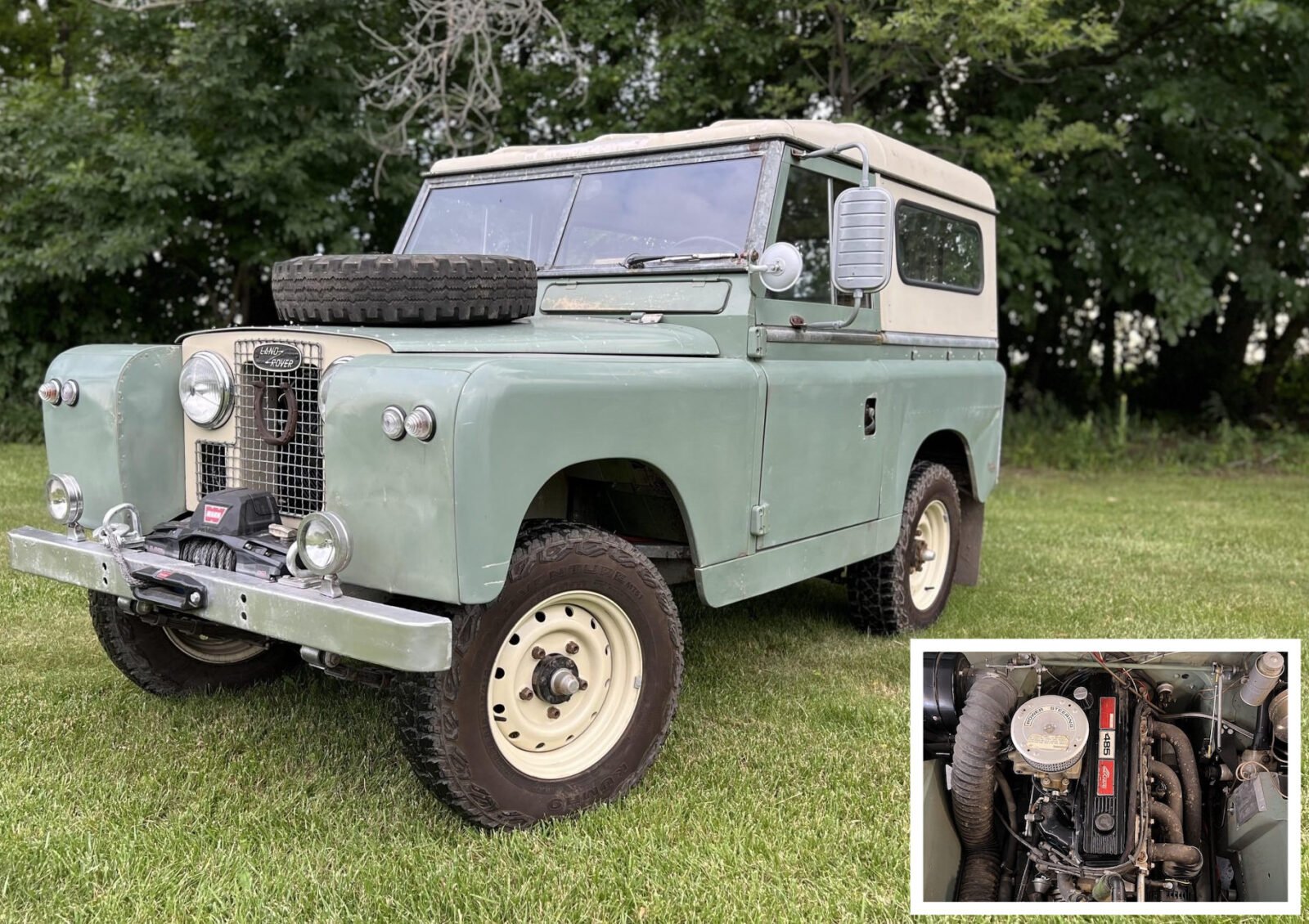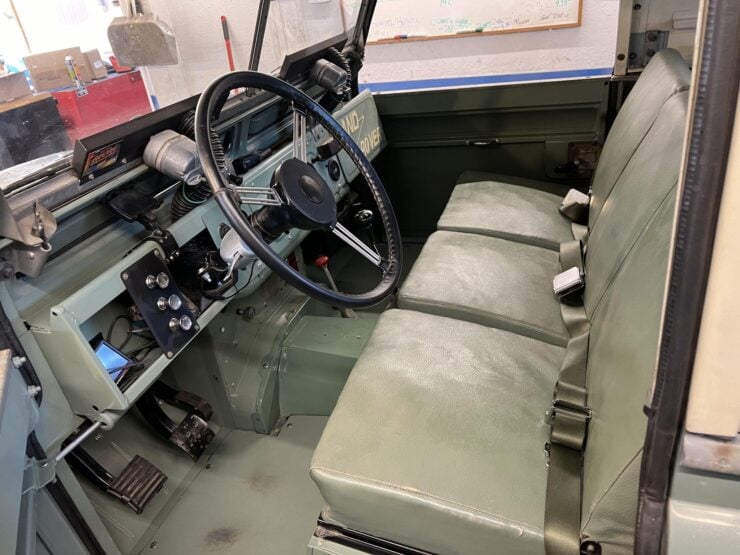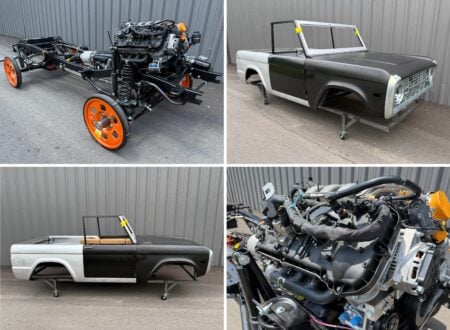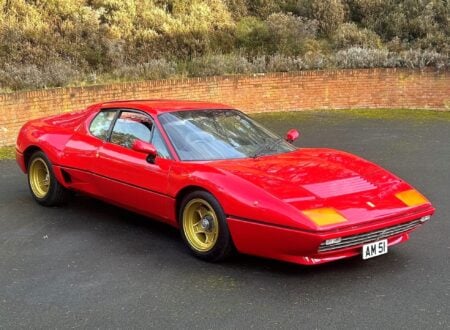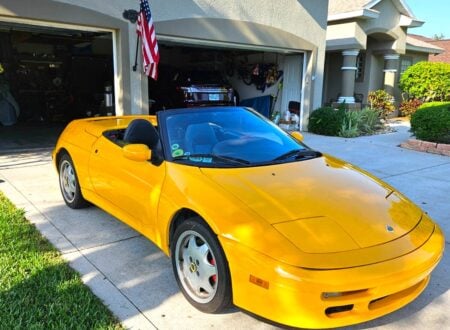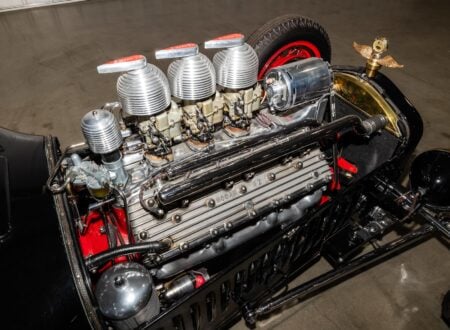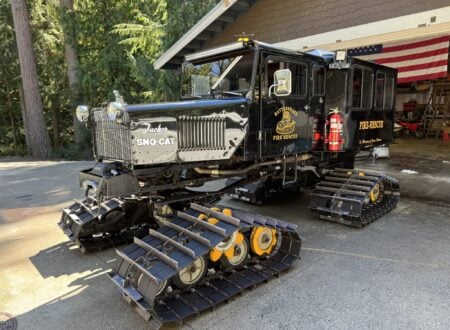This is a 1964 Land Rover Series IIA that benefits from a rather unusual engine swap. In place of the original 2.25 liter inline four you’ll now find a 3.7 liter MerCruiser Model 485 inline-four that produces vastly more power and torque.
This vehicle also benefits from a new galvanized chassis, a repaired steel bulkhead, a new wiring loom, a new exhaust system, upgraded wheels and tires, and the fitment of a highway-friendly 5-speed manual transmission.
Fast Facts – An Upgraded Land Rover Series IIA
- This 1964 Land Rover Series IIA features an unusual engine swap, replacing the original 2.25-liter inline-four with a fuel-injected 3.7 liter MerCruiser Model 485 inline-four. The marine engine, which includes a number of Ford V8 parts, significantly increases power output to 185 bhp and 280 lb ft of torque, more than doubling the original engine’s performance.
- The vehicle has undergone extensive upgrades, including a new galvanized chassis, repaired steel bulkhead, new wiring loom, and a custom exhaust system. It now features a highway-friendly 5-speed manual transmission, 16″ Wolf tubeless wheels with Kumho Roadventure tires, and upgraded Bilstein shock absorbers, improving both on-road and off-road capabilities.
- The MerCruiser Model 470 series, originally developed for marine use, it utilizes many Ford V8 components in an inline-four configuration. Its compact size and make it suitable for various automotive applications. The engine’s high torque output and adaptability have made it popular for unusual swaps.
- This Land Rover Series IIA, now for sale on Bring a Trailer, represents a blend of classic British 4×4 design with American marine engine technology. The combination offers significantly improved performance while maintaining the vehicle’s outward appearance.
The Unusual 3.7 Liter MerCruiser Model 470 Series
The MerCruiser Model 470 series was developed by Mercury Marine as a marine engine, making use of a broad range of parts from the pre-existing 460 cubic inch Ford big block V8. This vastly reduced engine development time and made many spare parts easy to source for owners.
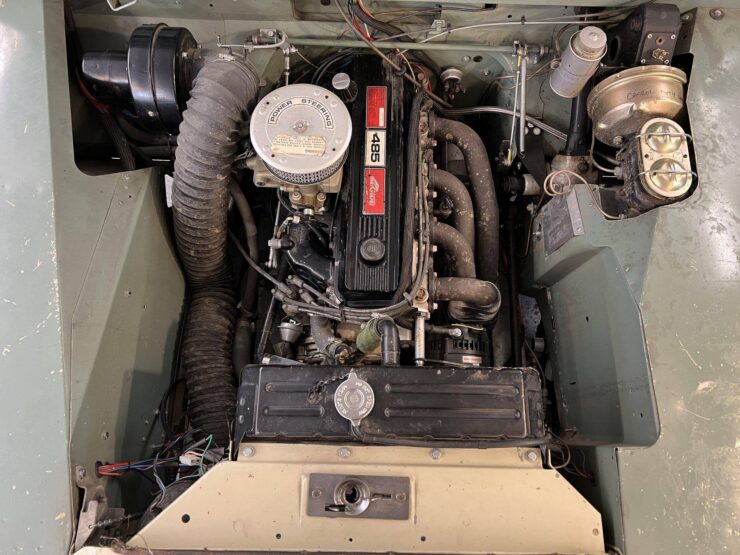

What the engineers at Mercury Marine did was develop a new aluminum alloy block that could be fitted with the 460 Ford V8 head, making it essentially half a V8, and it also used the Ford pistons, connecting, rods, valves, rockers, and more.
Initially the 3.7 liter MerCruiser used the original iron Ford V8 head but an aluminum head was developed later, this helped significantly reduce the overall weight, it worked better with the aluminum block and reduced issues with differential thermal expansion which had caused a number of head gasket failures.
For the uninitiated, differential thermal expansion is simply a fancy term for the fact that different materials (like iron and aluminum) expand at different rates when they get hot, and this can cause issues in engines that have iron and aluminum parts bolted together – typically heads and blocks.
The MerCruiser 470 debuted in the mid-1970s and remained in production until the late 1980s. The engine provided an alternative to V6 and V8 marine motors and its compact inline-four form factor made it easier to fit into engine bay.
A number of variations were offered, including the 470, 485, 488, and the series was later renamed the 170MR and 190MR to denote engines using a new gear housing.
The engine’s power output was impressive for its size, producing approximately 170 bhp and 280 lb ft of torque depending on the year and specification. The Model 485 was fitted with a four barrel carburetor (in place of the 470’s two-barrel) which increased output to 185 bhp, and it reportedly had slightly more torque.
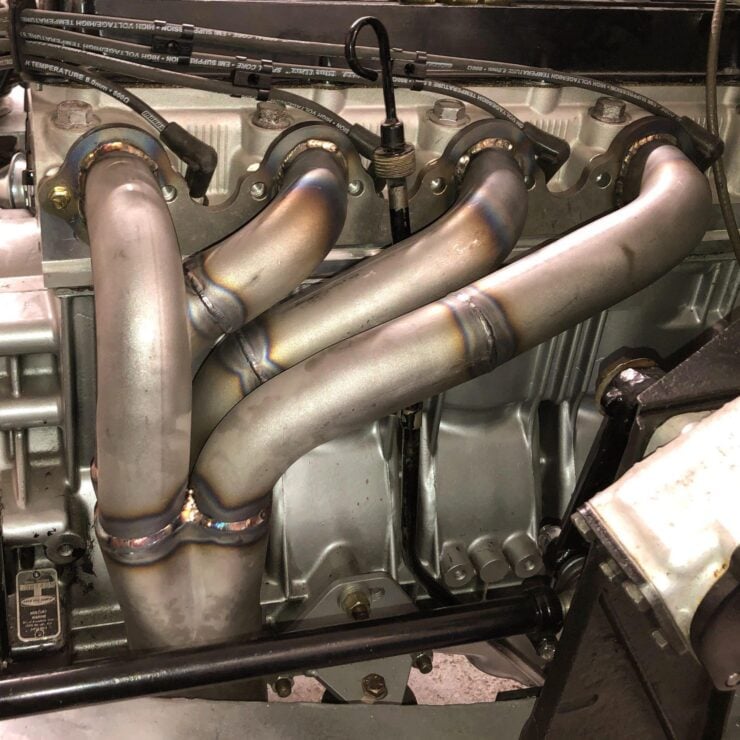

The relatively low weight of the all-aluminum version of the Model 470 series and the fact that it can fit into many smaller automotive engine bays has resulted in it being swapped in to a wide variety of cars and 4x4s – from Lotus Seven-style clubman sports cars to 4x4s and everything in-between.
Some engine parts can be more tricky to source than others, the intake and exhaust manifolds are no longer in production and can be difficult to find in good condition, but many owners have resolved this by having their own fabricated.
The MerCruiser-Land Rover Series IIA Shown Here
The Land Rover you see here is a short wheelbase 1964 Series IIA model that is the first we’ve come across with a MerCruiser Model 485 engine swap. Though the idea of dropping a boat engine into a four-wheeler may sound absurd on the face of it, but the merits of this specific boat motor actually make it a surprisingly good idea.
The original 2.25 liter inline-four petrol engine in the Series IIA Land Rover was good for 72 bhp and 120 lb ft of torque, these figures did vary somewhat as the compression ratio of the engine was upgraded as the 1960s progressed with a subsequent increase in both horsepower and torque.
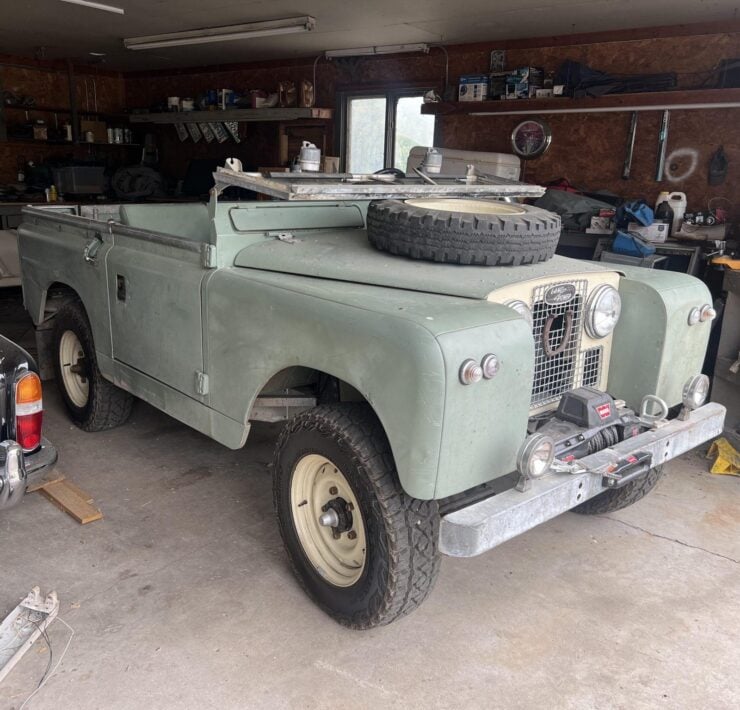

As noted further up, the MerCruiser Model 485 is good for 185 bhp and 280+ lb ft of torque, well over double the original engine’s figures even on a good day. The weight penalty is minimal as the original Land Rover engine had an iron block and an iron head, versus the aluminum block and head of the Model 485 engine used here.
The engine swap into this Land Rover also included the fitment of a 5-speed NV4500 manual transmission, a lightweight flywheel, rebuilt custom driveshafts, a dual-range transfer case, and 4.70:1 ratio front and rear differentials.
Series Land Rovers, and the closely related Defender that followed, all famously had aluminum body panels that significantly reduced issues with corrosion. The vehicles did still make use of a traditional steel ladder frame chassis, a steel bulkhead, and a number of other steel parts, like the door toppers and tailgate.
The Series IIA you see here now benefits from the fitment of a galvanized steel chassis, a common aftermarket upgrade that essentially eliminates chassis rust issues. It also has a repaired and repainted bulkhead and seat box area, and a replacement wiring harness.
It’s now riding on 16″ Wolf tubeless wheels with 225/75 Kumho Roadventure MT51 tires, with a spare tire mounted on the hood, the four-wheel drum brakes have been overhauled, and it now has upgraded remote-reservoir Bilstein shock absorbers installed on all four corners.
This unusual Land Rover is now being offered for sale on Bring a Trailer out of Shakopee, Minnesota. It comes with a fire extinguisher, a high-lift jack, and a clean Minnesota title in the seller’s name. If you’d like to read more about it or register to bid you can visit the listing here.
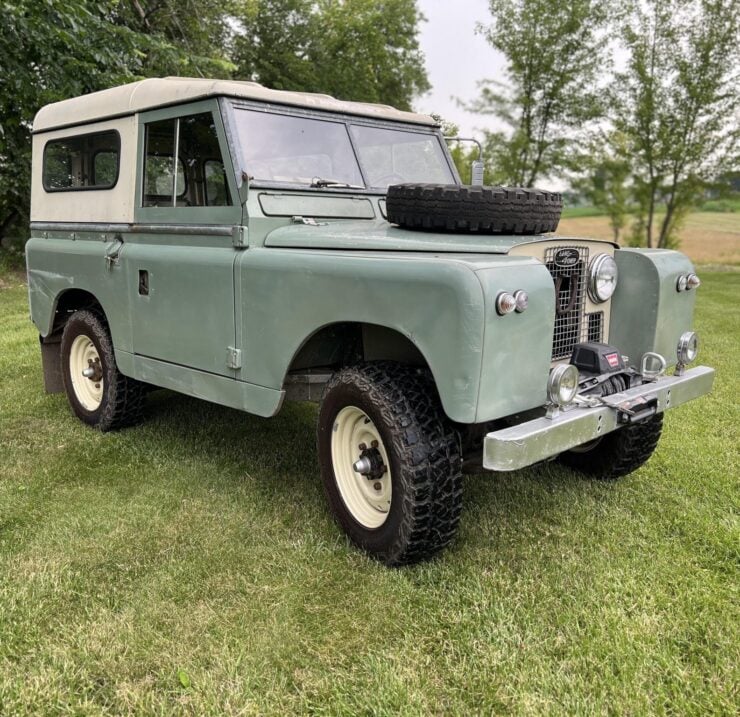
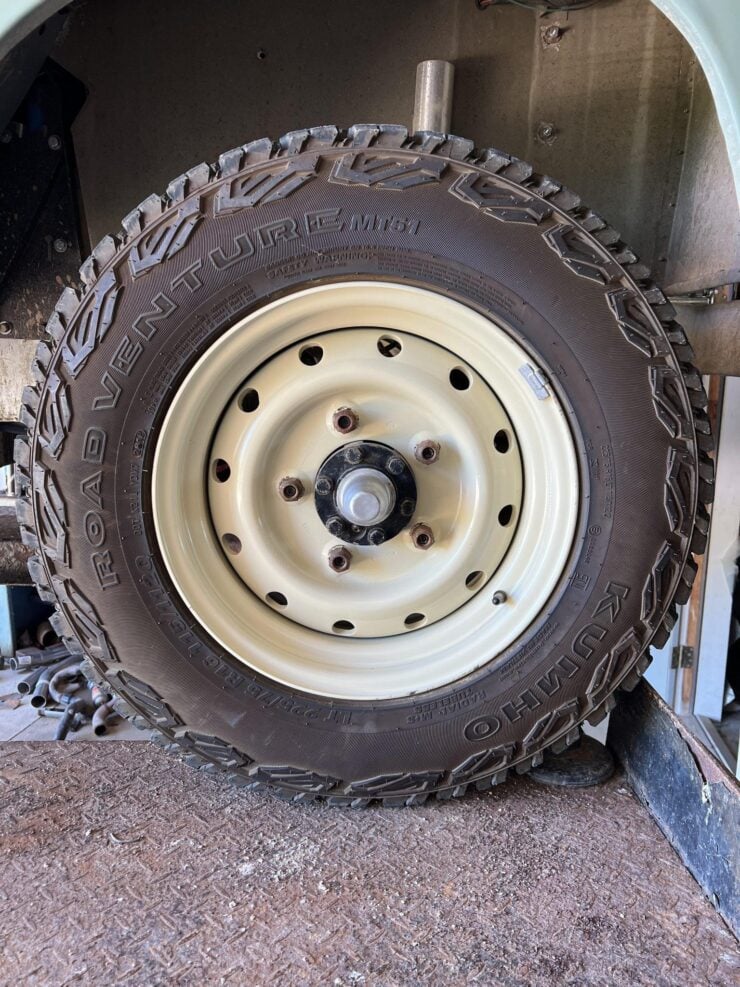
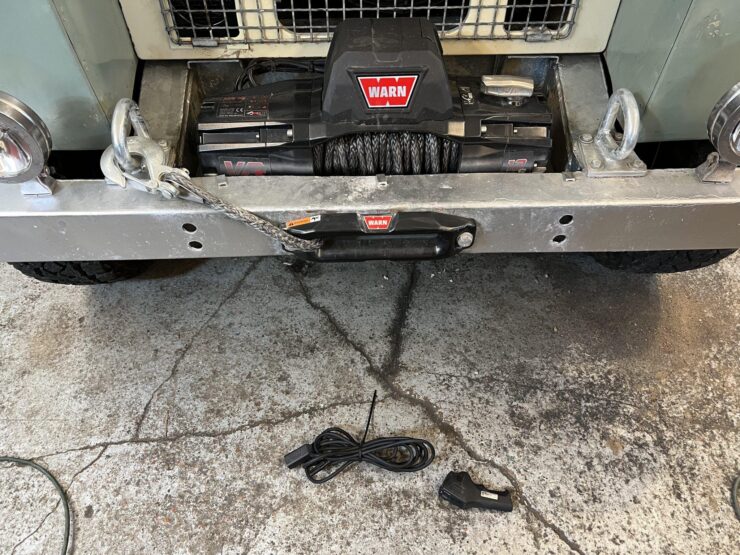
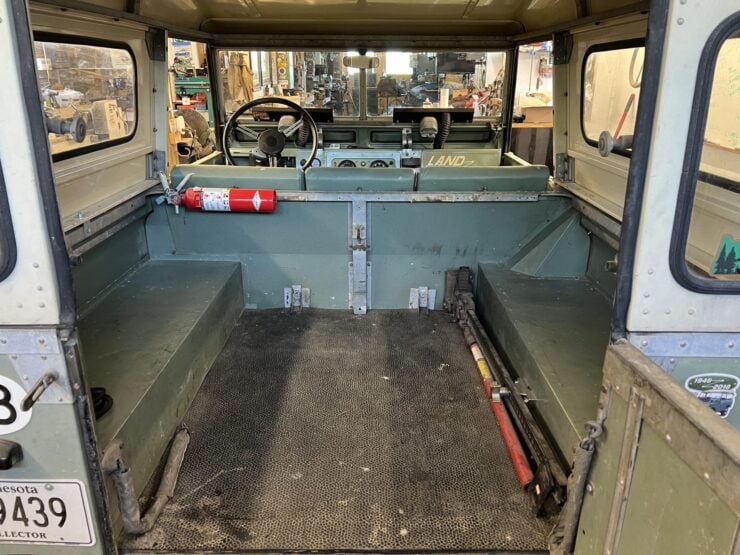
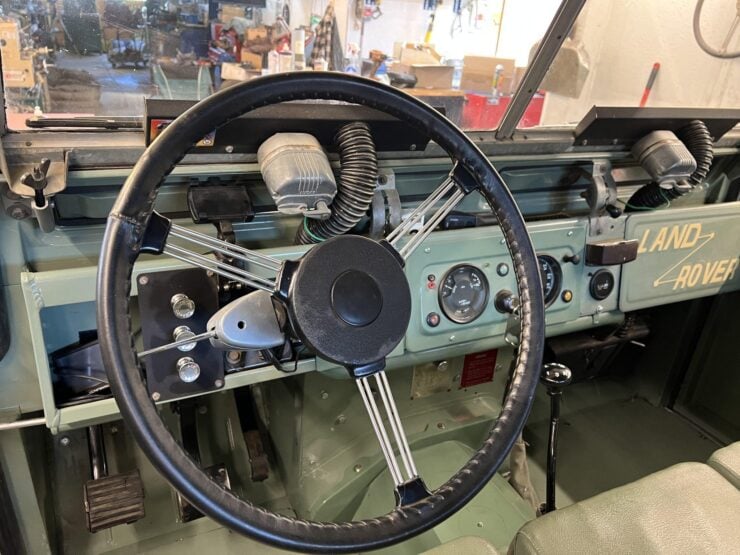
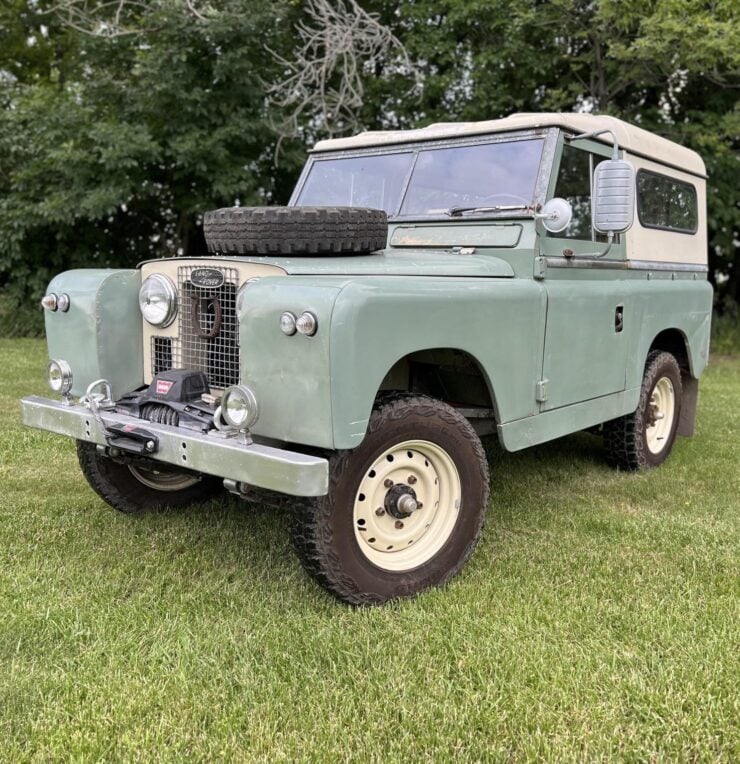
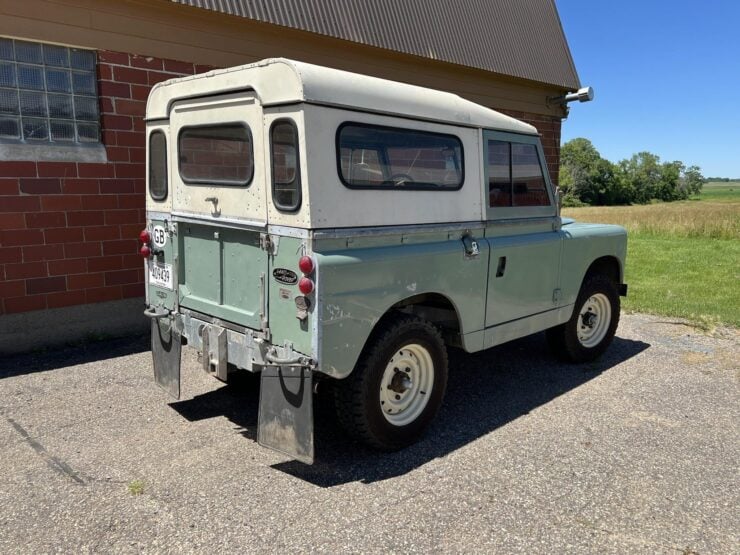
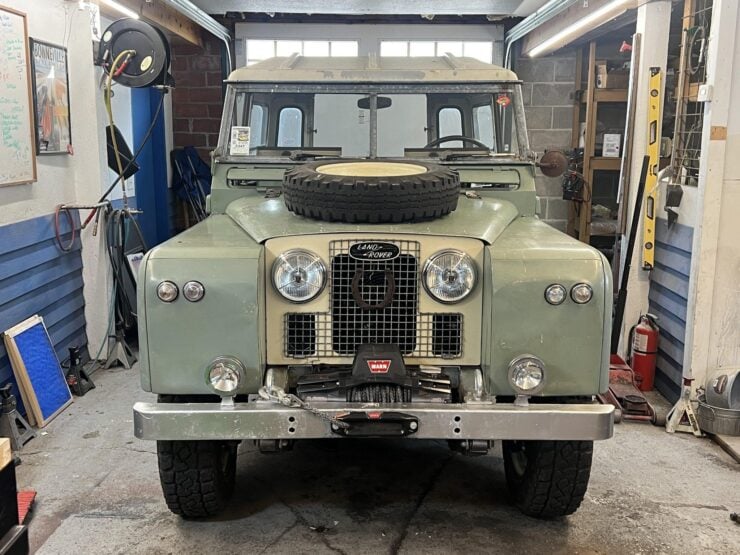

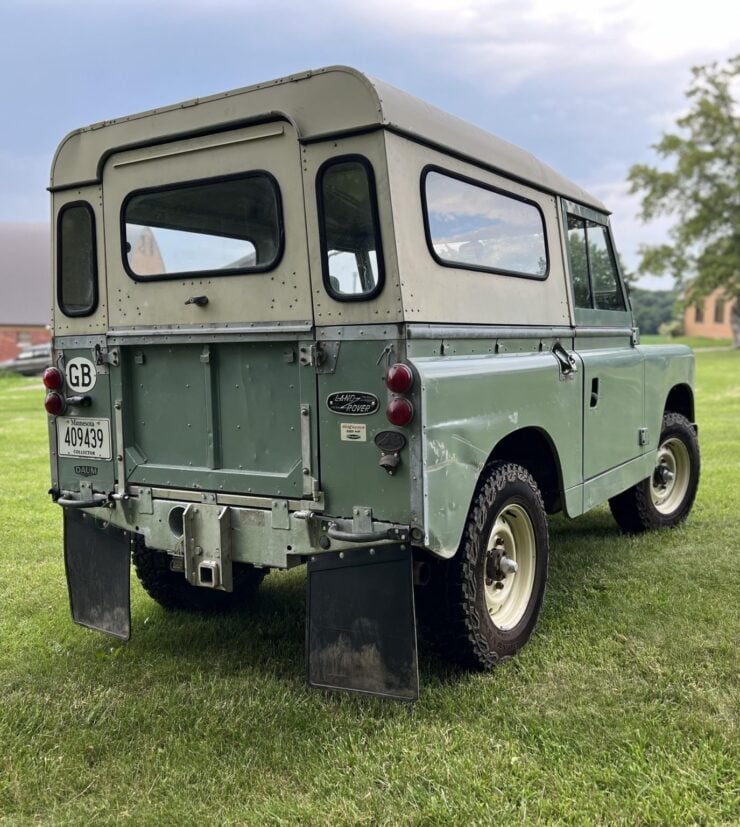
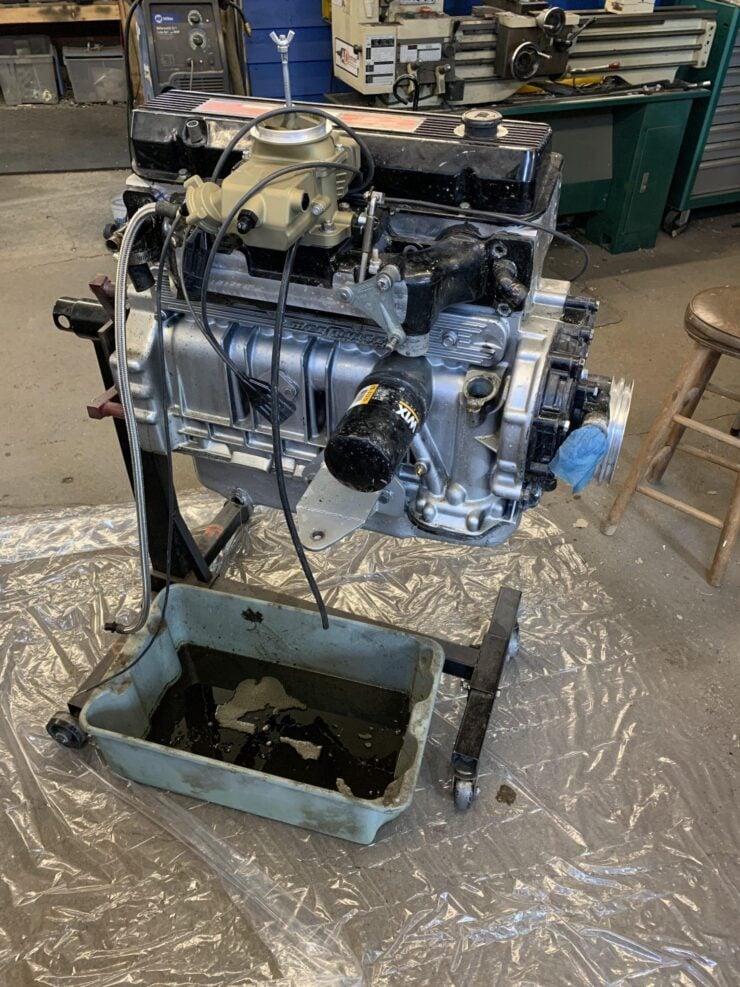
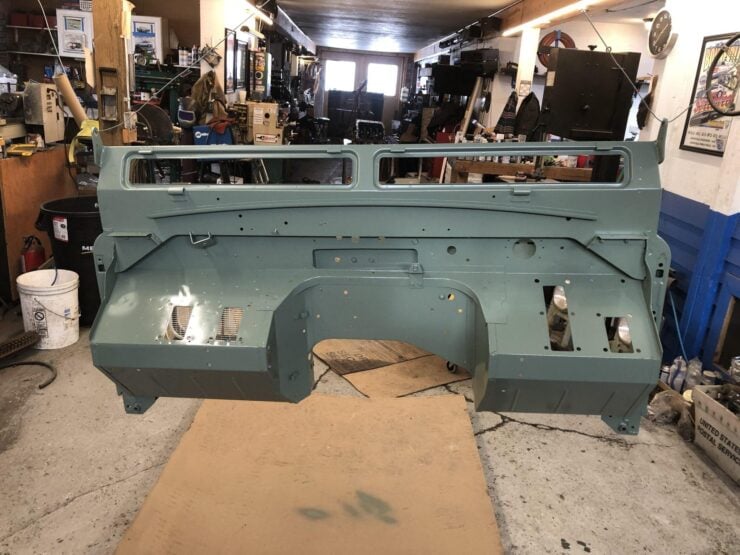
Images courtesy of Bring a Trailer

